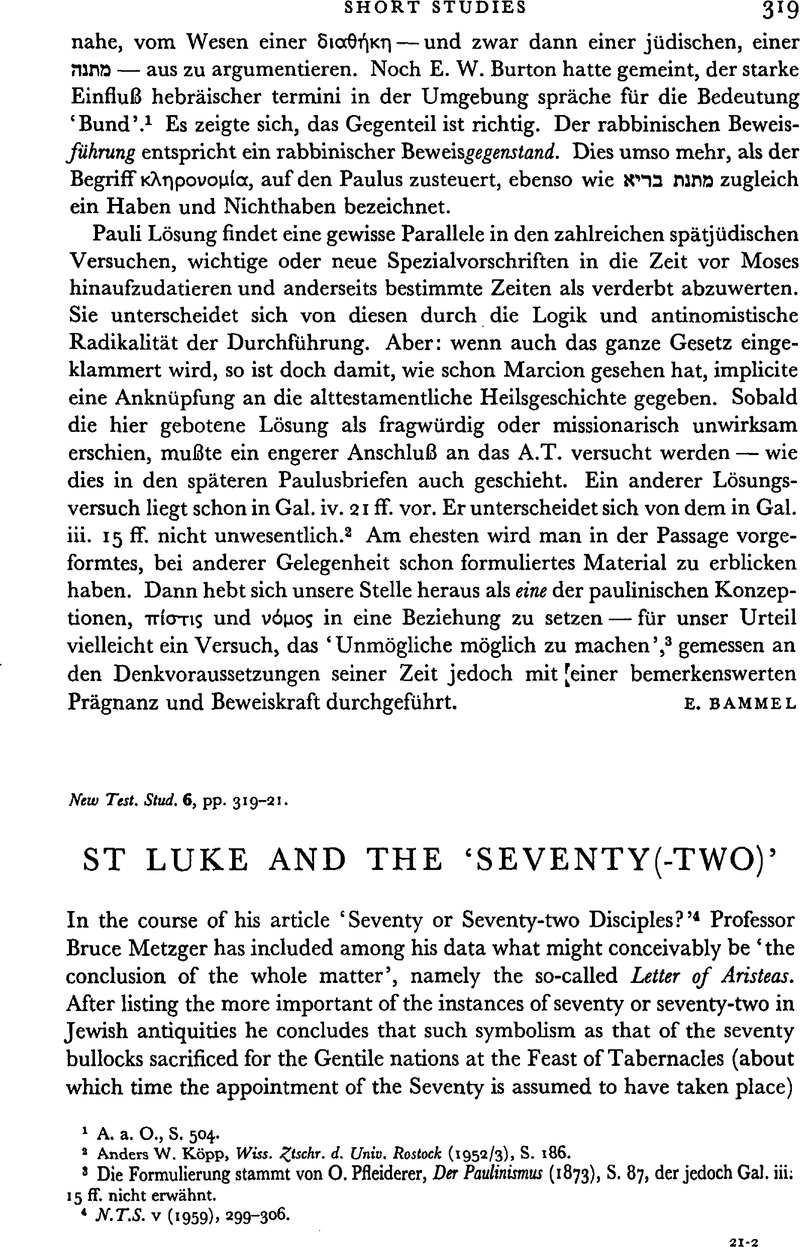Article contents
St Luke and the ‘Seventy(-Two)’
Published online by Cambridge University Press: 05 February 2009
Abstract

- Type
- Short Studies
- Information
- Copyright
- Copyright © Cambridge University Press 1960
References
page 319 note 1 A. a. O., S. 504.
page 319 note 2 Köpp, Anders W., Wiss. Ztschr. d. Univ. Rostock (1952/1953), S. 186.Google Scholar
page 319 note 3 Die Formulierung stammt von O. Pfleiderer, Der Paulinismus (1873), S. 87, der jedoch Gal. iii: 15 ff. nicht erwähnt.
page 319 note 4 N.T.S. v (1959), 299–306.Google Scholar
page 320 note 1 Cambridge Biblical Essays, ed. Swete, H. B. (London, 1909), p. 479.Google Scholar
page 320 note 2 The Four Gospels (London, 1924), p. 267.Google Scholar
page 320 note 3 ‘The Semitisms of St Luke's Gospel’, J.T.S. XLIV (1943), 129–38.Google Scholar
page 320 note 4 Josephus, Antiq. XII, paraphrases about two-fifths of Aristeas while retaining much of its characteristic vocabulary. For a recent discussion of its use by Philo (De Vita Mosis, II, v–vii), see M. Hadas, Aristeas to Philocrates (New York and London, 1951), pp. 21–6.
page 320 note 5 In an extended review of Hadas, op. cit., in the Crozer Quarterly, xxlx (Chester, Pa., 1952), 201–5.
page 320 note 6 ‘The Origin of the Gospel Pattern’, J.B.L. LXXVIII (1959), 115–24.Google Scholar
- 2
- Cited by




